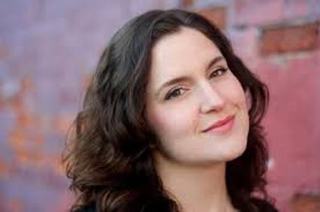|
Back
Music In The Key of Sea New York
Grace Rainey Rogers Auditorium, Metropolitan Museum of Art
11/06/2015 - & November 7, 2015
Thomas Adès: Chamber Symphony, Opus 2
Richard Reed Perry/Bryce Dessner: Wave Movements for strings, percussion, timpani and soprano (American Premiere)
Estelí Gomez (Soprano)
Members of the New York Philharmonic Orchestra, André de Ridder (Conductor)

A. de Ridder (© mso.com.au)
“... lungo un viaggio e strano” (…”a voyage long and strange”)
Christopher Columbus, 1492
While the terrestrial Admiral Columbus was a genocidal creep, the maritime Columbus was a genius of the waves. With little but a quadrant and a compass, he knew every wave in the Atlantic Ocean: movements, troughs, crests, flotsam, particles, their colors in the day and darknesses at night.. He could read them from the mast, and follow them to the horizon.
And this is exactly what composers Richard Reed Perry and Bryce Dessner tried to duplicate in their 40-minute Wave Movements for the second half of “Contacts!” last night. That was a stunning work, though Contact!’s format itself has changed.
First, the “New-Music” series was precluded by a quarter-century-old work of Thomas Adès, fairly well known here.. More important, in previous concerts, either conductor Alan Gilbert or WQXR’s esteemed John Schaefer would have informal (but very informative) talks with the composer before each piece.
That was missing. And while the program notes by both Thomas Adès and the Perry/Desmer team were excellent, one missed the give-and-take of the usual format.
Nonetheless, this program was illuminated by the New York Phil debut of Dutch conductor André de Ridder. Previously I was acquainted with him through the recording of Max Richter’s Recomposed: Vivaldi’s “The Four Seasons”, one of the most beautiful transcriptions I have ever heard. Nor did he falter with either of the two works played last night. He is a careful, very caring conductor, and this was shown so brilliantly both in the Thomas Adès work and the long, strange, very beautiful piece by composers Perry and Dessner.
Like the six-century old Genoese Admiral, these two composers also took careful note of the world’s seas. Not for gold and slaves, but for the sake of art. In their own words: “To record ocean waves at multiple seashore locations around the world, and then to accurately rotate the rhythms of the wave patterns, re-creating them into written music for string orchestra.”
Not that waves were an original idea (Debussy, Ibert, Elgar, Vaughan Williams infinitum). Yet the concept of cloning musically, enlarging, “filtering and re-filtering” and ending with a modern folksong about the British Navy, was, to say the least, a new idea.
The result of Wave Patterns, now enlarged to include percussion, timpani and soprano, offered a sometimes fascinating (if sometimes meandering) gift from the sea. The meandering was my own fault. Wave Patterns is stylistically in the John Luther Adams school of composing long screeds on the vibrations, memories and spirit of natural phenomena. And frequently, one may lose contact, wander off into another dreamland.
Forty-odd minutes is indeed a long time, although Parry and Dessner managed to illustrate (music/metaphorically) wavelets, breakers, tsunami, crests, troughs and all in between. I doubt if they would put titles on these string episodes, for one was obviously supposed to get into the moving spirit of the thing. That was easy, for they used all the tricks of string orchestras–glissandi and open strings, rustlings, fluctuating and exaggerated bow pressure–to produce their effects.
Add to this the most important timpani and percussion thickenings of the music by Daniel Druckman and Christopher Lamb. And augmenting this were screened seascapes by Hiroshi Sugimoto. They were all of the same style: an unmoving horizon, the waves barely (yet constantly) moving. A image of early Glass-Reich harmonies, yet all in darker or lighter shades of gray.
(Once in the Merchant Marine, I was reminded here of a boring three days when my supertanker at rest during dense dense fog.)

E. Gomez (© performngartsmonterey)
Toward the end of this saga, the soprano Estelí Gomez appeared, singing all the verses of British singer Cyril Tawney’s song, Funnel Gray. This, with the heavy chordal heaving thrusting music, was an effective climax to a work, sometimes mesmeric, sometimes tiring, yet, with enough concentration, as interesting as waves themselves.
Preceding this was Thomas Adès’ 17-minute homage to the basset clarinet. (Or, as British pop-singing fans might title it, “Sheerly Basset.”) Mr. Adès affirmed that he had marveled at the compass of the bassett clarinet (actually an alto clarinet) , and as he composed it, all the instruments of the chamber ensemble became infected with the color of the instrument.
His description, including the task of having four movements shoved together, was wonderful. Mr. Adès’ problem in this work, written when 17 years old, was that he was so inventive, so technically adept work was that he was unable to ration his wonderful ideas.
So here we had a mini-symphony, with bassett clarinet imitations (mainly by a solo trombone), rhythms of a tango, rhythms of jazz, Schoenbergian atonality, quirky ridiculous passages, and an accordion! And for the record, a real bassett clarinet, played by David Gould.
Mr. Adès’ Chamber Symphony was an obvious tour de force, frequently delightful, the creation of a young genius juggling far too many balls at the same time.
Harry Rolnick
|